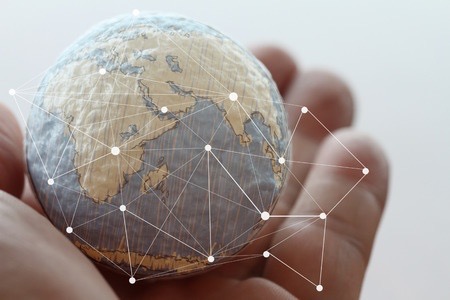The Interwebs, Then and Now

October 27, 2016
Built as a weapon in the Cold War and now used to watch cats jump into boxes, the Internet is a dynamic organism that is used in everything from the research for this article to hosting billion-dollar companies like Amazon.
But how does the Internet actually work, why was it built, and how will it continue to impact us?
In the most basic terms, the Internet is a global network of computers all connected to each other. Think of the Internet as an electrical grid, and every house connected to the grid is a computer. Because all the “houses,” or computers, are connected to the grid, they can receive and send information to and from other computers. When you go onto a website, all your computer is doing is receiving information that makes up the website from another computer somewhere on the Internet.
Even though nowadays the Internet provides us with many funny videos and other forms of entertainment, it had a very serious beginning. According to the website of the History Channel, the U.S. government was concerned about the Soviet Union attacking the national telephone system: “Just one missile, they feared, could destroy the whole network of lines and wires that made efficient long-distance communication possible.”
In 1962, MIT scientist J.C.R. Licklider proposed the idea of a network of computers for communication. “Such a network would enable government leaders to communicate even if the Soviets destroyed the telephone system,” he wrote. This idea eventually became the Internet.
In 1969, the first information to be sent over the Internet was the text “LO.” A computer at UCLA was trying to send the word “LOGIN” to a computer at Stanford — each computer was about the size of a small house — but after the first two characters were sent, the entire network crashed, making “LO” the first information to be ever sent on the Internet.
For the fun of it, one could assume that after the network was rebooted, the word “LOGIN” was sent again. This means that the first word to ever be sent on the Internet was “LOL,” although technically it would have looked like this: LOLOGIN.
At that time, the Internet was just a connection among a few computers —several small networks without IP addresses, rather than one mass Internet.
This changed in 1970 when the computer scientist Vinton Cerf developed a way for all the computers on all of the world’s mini-networks to communicate with one another. His invention, known as “Transmission Control Protocol,” introduced the idea of IP addresses. One writer describes Cerf’s protocol as “the handshake” that introduces distant and different computers to each other in a virtual space. Cerf created the Internet that we know today.
Today, according to WorldWideWedSize.com, a website that estimates the size of the Internet daily, the indexed web contains “at least 4.81 billion pages.” But those are only the pages that Google and other search engines index; this does not include the “Deep Web.” According to the award-winning website livescience.com, “Deep Web content can be as innocuous as the results of a search of an online database or as secretive as black-market forums accessible only to those with special Tor software.” So in other words, the Internet is really big — and getting bigger.
Due to the massive size of the Internet nowadays and the fact that anyone with a computer and a connection can upload and share just about anything, there are many strange and random facts involving this network of computers:
- According to BuzzFeed, the first e-mail was sent in 1971 by Ray Tomlinson to himself, and “He doesn’t remember what it said.” Nowadays, out of the 204 million emails sent every minute, 70 percent are spam.
- In the ‘70s and ‘80s, the first Internet porn was called “ASCII p0rn.” According to Salon.com, “It consisted of erotic art composed of the most basic elements: the ASCII character set — not much more than the alphabet, numbers and assorted punctuation marks.”
- The world’s first webcam was simply used to monitor a coffee pot at Cambridge University to see when the coffee was ready, according to the technology news site fossbytes.com.
- Today, even when almost everyone is on the web surfing and posting, 61.5 percent of all Internet traffic is generated by bots.
But what is the future of the Internet? Will it just continue to get bigger and connect even more computers? There are actually many interesting predictions on how the Internet will grow and affect us as a nation, world and people. Following are just few from a PBS article.
One possibility for the future of the Internet itself is that “Information sharing over the Internet will be so effortlessly interwoven into daily life that it will become invisible, flowing like electricity, often through machine intermediaries.” It is also predicted that “the spread of the ‘Ubernet’ [another term for the Internet] will diminish the meaning of borders, and new ‘nations’ of those with shared interests may emerge online and exist beyond the capacity of current nation-states to control.”
On the flip side, it is also predicted that “humans and their current organizations may not respond quickly enough to challenges presented by complex networks” — networks like the Internet.
It is a fact that the Internet has a large part in our everyday lives. Whether we use Google Docs for an English paper or search how to find the area of a triangle, the Internet is involved. The contrast between the simplicity of the idea of the Internet — a simple network — and the massively complex challenges it presents us with, socially, internationally, and economically — is amazing.
No one really knows how the Internet will affect our lives in the future, but it is clear that it is not going away anytime soon, and its impact will continue to influence nearly all aspects of our lives.

